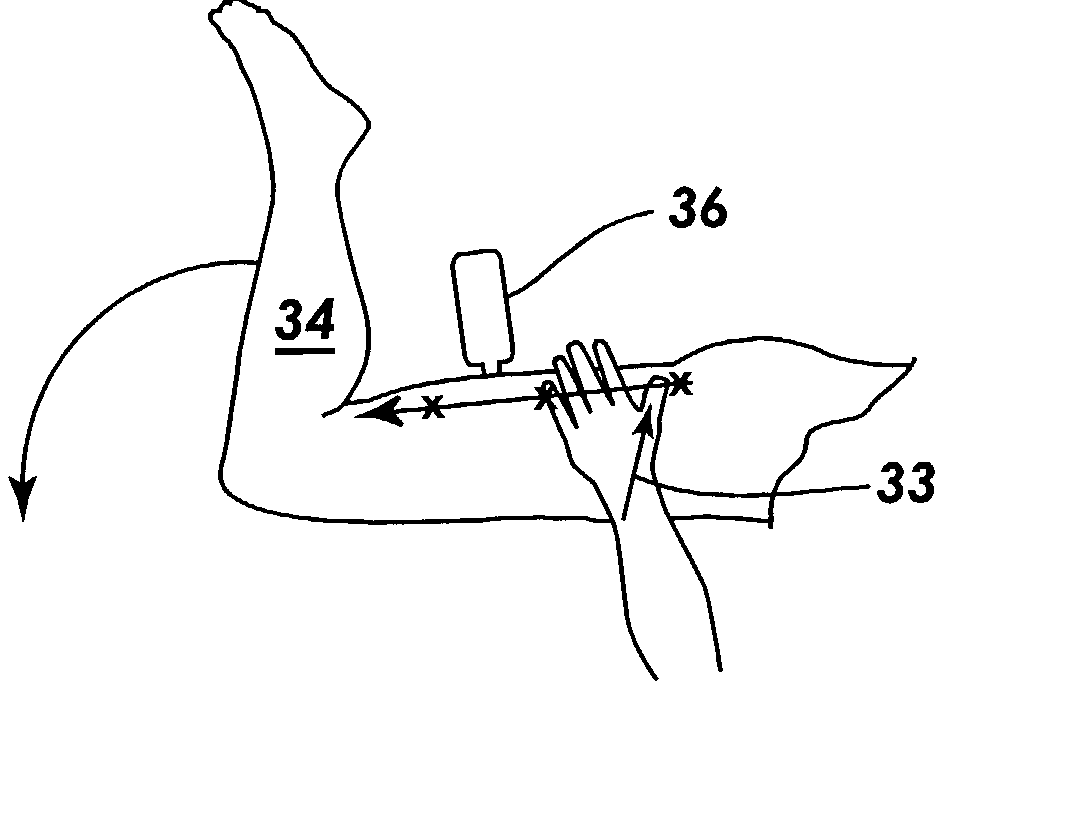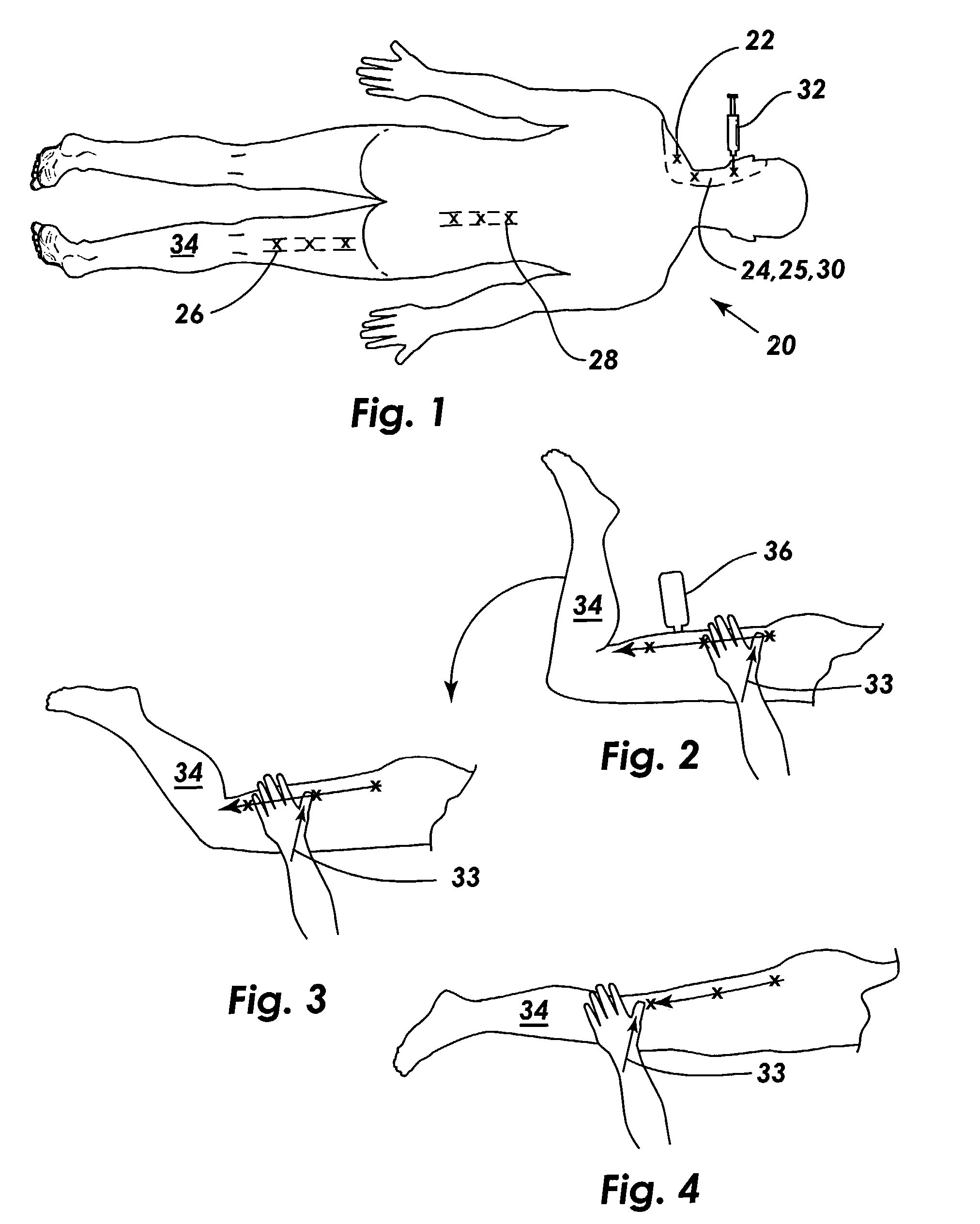Method of normalizing soft tissue
a soft tissue and soft tissue technology, applied in the field of soft tissue normalization, can solve the problems of soft tissue tear or separation, aberrant reflexes, pain, degenerative changes of spinal discs and facets, etc., and achieve the effects of restoring strength and performance, relieving abnormal sensitivity, and stopping recurring pain
- Summary
- Abstract
- Description
- Claims
- Application Information
AI Technical Summary
Benefits of technology
Problems solved by technology
Method used
Image
Examples
Embodiment Construction
[0015] Turning now to the drawings and more particularly to FIG. 1 we have a perspective view of a patient lying in a prone position having adhesions in muscles 24 on the back portion of the upper leg 26, the lower back 28, and the left side of the lower neck 30 marked x for treatment. Most generally, the method of normalizing an elongate traumatized soft tissue 25 having pathology 22 therein comprising the steps of: locating the pathology 22 in the traumatized tissue 25; applying pressure on the traumatized tissue 25; and, moving the pressure along the length of the traumatized tissue 25 over the fibrous adhesions 22 therein to break down those adhesions 22.
[0016] Most preferably, after the fibrous adhesions are located through indications of sensitivity from the patient and feeling for points of inflexibility in and along the muscles 24, the adhesions 22 are first marked X, and then injected 32 with an anesthetic. The anesthetic both promotes the breakdown of the adhesions 22 duri...
PUM
 Login to View More
Login to View More Abstract
Description
Claims
Application Information
 Login to View More
Login to View More - R&D
- Intellectual Property
- Life Sciences
- Materials
- Tech Scout
- Unparalleled Data Quality
- Higher Quality Content
- 60% Fewer Hallucinations
Browse by: Latest US Patents, China's latest patents, Technical Efficacy Thesaurus, Application Domain, Technology Topic, Popular Technical Reports.
© 2025 PatSnap. All rights reserved.Legal|Privacy policy|Modern Slavery Act Transparency Statement|Sitemap|About US| Contact US: help@patsnap.com


